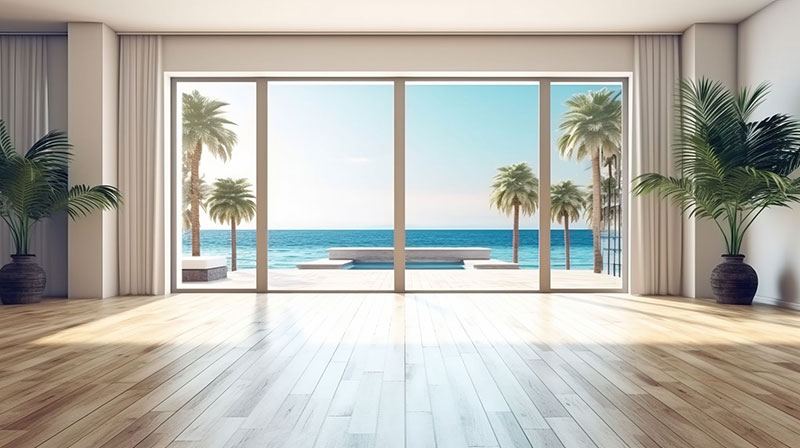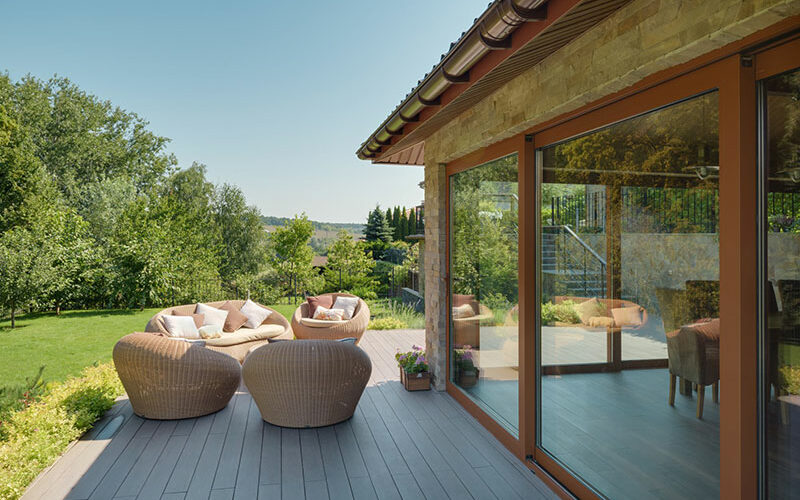Advertisement
Creating seamless indoor-outdoor transitions in your home isn’t just about adding value; it’s about enhancing your living experience. As homeowners seek to blur the boundaries between their interior spaces and the natural world outside, the design strategies to achieve this have become increasingly sophisticated.
The goal is to create a fluid, almost imperceptible transition that extends living spaces into the outdoors, making both feel as one. Achieving this requires careful consideration of materials, layout, and design elements.
One effective method to ensure a smooth indoor-outdoor transition is using outdoor porcelain pavers. These durable, versatile tiles can mimic the look of indoor flooring, extending it outside to create a continuous look that seamlessly blends your home’s interior with its exterior.
Continue reading to discover ways to transform your living spaces and achieve a seamless indoor-outdoor transition.
Maximizing Natural Light And Views
Natural light and expansive views make your home feel brighter and more spacious and foster a connection with the outdoors.
Here are some key strategies to incorporate into your design:
- Embrace expansive windows and glass doors: Large windows act like picture frames, bringing the beauty of your exterior environment right into your living space. Sliding glass doors create a seamless transition between indoors and outdoors, perfect for blurring the lines between the two. Consider floor-to-ceiling windows or glass walls for a truly dramatic effect.
- Skylights are your secret weapon: Don’t underestimate the transformative power of skylights. They bathe your interior with natural light from above, illuminating even the darkest corners. Strategically placed skylights can brighten hallways, bathrooms, and even interior living areas, reducing dependence on artificial lighting during the day.
- Open up your walls (with caution): In some cases, removing walls separating your indoor and outdoor areas can be a game-changer. This creates a more open and airy feel, fostering a sense of connection with your surroundings. However, consult with a structural engineer to ensure the feasibility of this approach and obtain any necessary permits.
Incorporating these strategies can transform your home into a light-filled haven that embraces the beauty of the outdoors.
Creating Visual Continuity
A seamless transition between your indoor and outdoor spaces goes beyond just aesthetics. It fosters a sense of connection and encourages you to extend your living area outward.
Here are some strategies to achieve visual continuity:
- Flooring that flows: Continuing the same flooring material from your interior to your exterior creates a unified look. Opt for weather-resistant materials like stone tiles, pavers, or even treated wood that withstand the elements. This creates a visual bridge, blurring the lines between where your home ends and your outdoor space begins.
- Mirror the design elements: Don’t stop at the doorway. Extend your design theme outdoors. Use similar colors, textures, and materials for furniture and décor in both spaces. This creates a sense of flow and makes the transition between the two areas feel natural. For example, consider using similar elements in your patio furniture and cushions if your living room features warm earth tones and natural textures.
- Bring the outdoors in (and vice versa): Breathe life into your indoor space with houseplants. Conversely, place comfortable outdoor furniture with throw pillows on your patio or deck. This two-way approach visually connects your indoor and outdoor living areas, reinforcing the feeling of a cohesive and extended living environment.
By incorporating these tips, you can create a seamless visual connection between your indoor and outdoor spaces, fostering a more inviting and unified living environment.
Creating Functional Outdoor Rooms
Your patio or deck shouldn’t be an afterthought. Treating it as an extension of your living area allows you to maximize its potential and create an inviting space to relax, entertain, or enjoy the fresh air.
Here are some strategies to create functional outdoor rooms:
- Define designated areas: Think beyond a single-purpose patio. Divide your outdoor space into designated areas that cater to different activities. Carve out a cozy conversation nook with comfortable seating, create a dedicated dining area with a table and chairs, or set up an outdoor kitchen for poolside barbecues. This zoning approach allows you to maximize the functionality of your outdoor space.
- Furnish for comfort and style: Invest in comfortable and weather-resistant outdoor furniture. Look for pieces that complement your indoor décor to create a cohesive feel. Consider adding throw pillows, blankets, and an outdoor rug to add a touch of personality and warmth.
- Climate control for year-round enjoyment: Don’t let the weather limit your enjoyment of your outdoor space. Consider installing retractable awnings or shade sails for sun protection. Conversely, you can incorporate outdoor heating elements like fire pits or patio heaters for cooler evenings. This allows you to enjoy your outdoor haven throughout the year, regardless of the season.
Transforming your outdoor space into functional areas can blur the lines between indoors and outdoors, creating an inviting extension of your home.
Conclusion

Blending your indoor and outdoor spaces is more than a design trend; it’s a lifestyle that enhances your home’s aesthetics and quality of life. By maximizing natural light, creating visual continuity, and designing functional outdoor rooms, you transform your home into a cohesive sanctuary that celebrates the beauty of the natural world.
Let these strategies inspire you to rethink your living spaces, encouraging a seamless flow between the comfort of the indoors and the allure of the outdoors. Take the first step today towards redefining your home’s boundaries and embracing a harmonious indoor-outdoor living experience.

